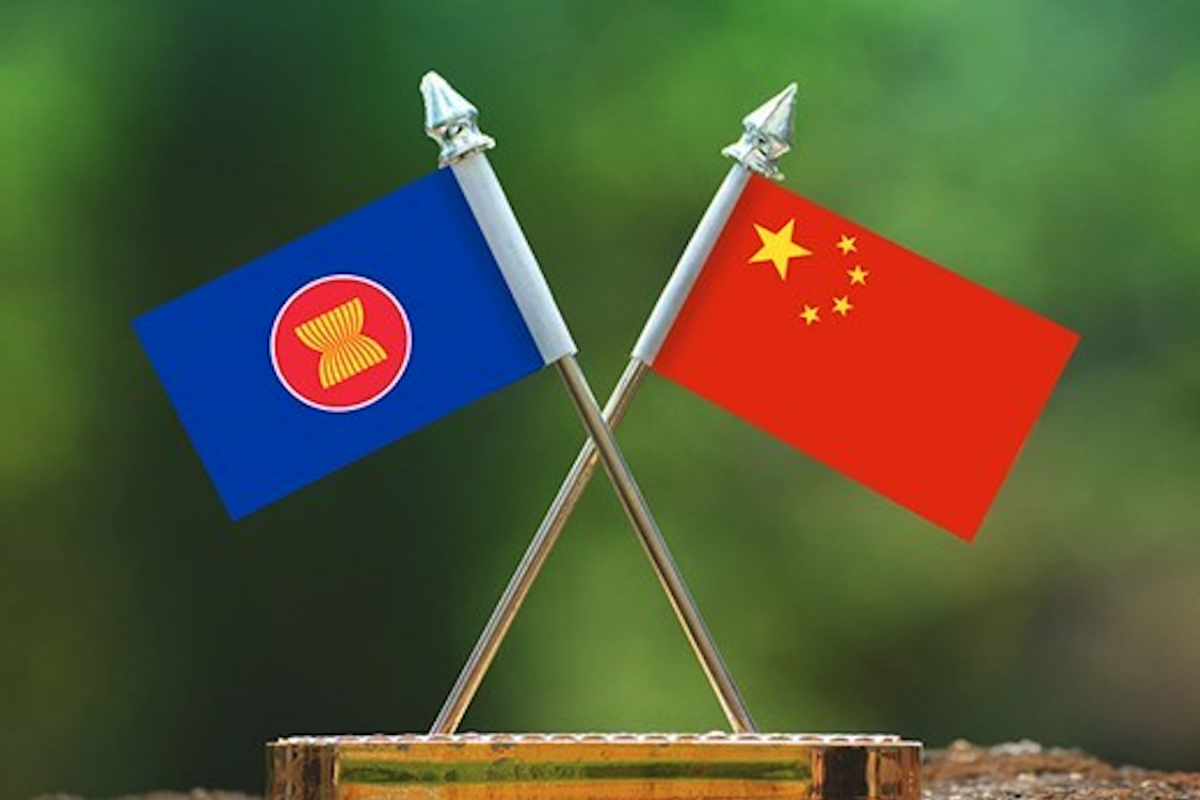For the Association of Southeast Asian Nations (ASEAN), relations with the People’s Republic of China (PRC) are of special significance. This is explicable due to many factors, ranging from geographic proximity and the aftereffects this factor entails to uncertainties stemming from the Belt and Road Initiative and its on-going and prospective implications for Southeast Asia.
The association has had to consider the China factor since its inception. Suffice it to mention that the negotiations on the establishment of ASEAN intensified after China increased its support to leftist radicals in many states of Southeast Asia. The ZOPFAN Declaration came into existence not least because of China’s negative reaction on the Soviet proposal to establish a collective security system in Asia. The Cambodian issue appeared as the most serious security challenge in Southeast Asia in the 1970s and the 1980s to a considerable extent owing to China’s support for the Communist Party of Kampuchea. After the Cold War, China’s assertive policy in the South China Sea was among the main reasons for the association to establish its cooperative security system – the ASEAN Regional Forum, the ASEAN Defence Ministers Meeting Plus Eight and the East Asia Summit. At present, the association aims to reap the benefits of China’s mega-strategy Belt and Road Initiative and simultaneously fears slipping into irrelevance as China’s possibilities rise.
Relations between ASEAN and China started in 1991, and the PRC was accorded the status of ASEAN Dialogue Partner in 1996. Although the early-mid 1990s saw a complicated picture in ASEAN-China dialogue, upwards trends prevailed. The association did not criticize China after the Tiananmen events, which Beijing highly appreciated. The Cambodian problem had been resolved, diplomatic relations between Vietnam and China had been restored. Importantly, contradictions between ASEAN and the US on economic issues, related, among other things, to Mahathir’s proposal to establish the East Asia Economic Group (later renamed to the East Asia Economic Caucus), incentivized the association to explore alternative partnerships. Among them, China mattered all the larger.
Overall, relations between ASEAN and China saw a good start, with the South China Sea issue remaining as the only significant point of concern. Nevertheless, as the Asian financial and economic crisis broke out in 1997-1998, this factor decreased in significance. For the association, the crisis was a painful experience since the economic destabilization coupled with the realization of the vulnerability of Southeast Asia to factors outside ASEAN’s control. At that juncture, China’s provided Southeast Asia with valuable assistance, which was appreciated by the association and its member states. As a result, ASEAN-China relations markedly improved, which was exemplified by numerous declarations and treaties ranging from cooperation in functional spheres to the China-ASEAN Joint Declaration on Strategic Partnership for Peace and Prosperity and the PRC’s joining the ASEAN Treaty of Amity and Cooperation. Although the South China Sea issue remained a major point of contradictions, in ASEAN’s vision, positive expectations from cooperation far outweighed potential risks.
The Framework Agreement on Comprehensive Economic Cooperation between China and ASEAN, signed in November 2002, and the preparatory measures to operationalize the ASEAN-China Free Trade Area (ACFTA) reinforced the upward trends. Although the association had reasons for concern, since CAFTA could negatively impact on the ASEAN producers and widen development gaps between the ASEAN member states, expectations were mostly optimistic. The events that followed – agreements between ASEAN and China on trade in goods, services and investment, coupled with the construction of trans-national infrastructure aimed to connect China and Southeast Asia, a rise of transactions in renminbi in trade between China’s southeastern provinces and the Indochina states – added to ASEAN’s optimism. But it was seriously shaken by ACFTA’s first results, as the ASEAN member states found it difficult to compete with the Chinese producers. To aggravate the problem, an influx of Chinese migrant workers generated anti-China sentiments in Southeast Asia, and the South China Sea issue was visibly moving beyond ASEAN’s control.
The PRC’s mega-strategy the Belt and Road Initiative opened a new page in relations between ASEAN and China. The BRI prioritizes the development of trans-national infrastructure, which is in synergy with strengthening regional connectivity as ASEAN’s top priority. Given that the Global ASEAN is among the main pillars of the ASEAN Economic Community Blueprint 2025, the BRI potentially allows companies of the ASEAN member states to participate in industrial and commercial projects beyond Southeast Asia. The BRI incentivizes other Asia-Pacific actors to play a catch-up game in Southeast Asia, part of which is investing in the trans-national infrastructure of ASEAN member states.
Nevertheless, negative implications are also in place. First and foremost, the BRI undermines the efficiency of the ASEAN-led cooperative security system presented by the ARF, the ADMM+8 and the EAS. Linking security and development, China is creating a new – common – security system, which operates on China’s terms and part of which is Southeast Asia. But most importantly, China may well use economic instruments as the BRI foundation to advance its political and security agenda. Examples of how it works, specifically concerning the South China Sea issue and the Mekong issue, are too striking to be ignored.
At present, the spectrum of China’s instruments to advance its interests in Southeast Asia is expanding. Of special note is the ASEAN-China Agreement to synergize the MPAC 2025 and the BRI signed in November 2019. Welcoming the Regional Comprehensive Economic Partnership (RCEP), China aims to link it with the BRI in order to facilitate its implementation. Developing in Southeast Asia the Digital Silk Road as part of the BRI, China nurtures ambitious plans. Arguably, China aims to integrate the construction of industrial objects, including the trans-national infrastructure, with the export of its software, the result of which will be China’s control over the key industries of the economy of the XXI century, including the “smart city”, the “smart governance” and so on. More than that, the digital infrastructure, mostly fiber cables, may well allow China to monitor and eventually shape political processes in the ASEAN member states, as manipulations during the vote counting procedures cannot be excluded. Last but not least in significance, China’s e-commerce platforms are implementing M@A strategies in Southeast Asia, which is exemplified by the companies Alibaba Group Holding Ltd, Tencent and JD.com. The afore-mentioned factors suggest that the PRC aims to gradually increase the dependence of Southeast Asian industries on its technologies, and eventually make the region a sphere of its privileged interests. This scenario seems likely for many reasons. Most importantly, the scale factor matters. As Tang Siew Mun put it, “ASEAN is a collective of ten small states. Even the largest economy of the grouping – Indonesia – is still smaller than that of China’s Guangdong province”. More than that, ASEAN still has a long way to go to make Southeast Asia a unified area for doing business, mainly, a single market and a single production base. In fact, ASEAN does not develop an “intra-ASEAN” product competitive across the world, for instance, the ASEAN smartphone or the ASEAN automobile. There are huge development gaps between different ASEAN member states. Finally, China and ASEAN have a deep and diversified cooperation, with the number of areas exceeding that between ASEAN and its other external partners. Due to the factor discussed above, the scale effect plays against the association. Arguably, the events of 2020-2021 have further strengthened China’s economic positions in Southeast Asia. Revealingly, amidst the COVID-19 pandemic China’s economy is recovering: in 2020, the PRC’s real GDP growth accounted for 2.3%, while, for instance, Indonesia, Malaysia, the Philippines, Singapore and Thailand demonstrated a negative growth: – 2.1%, – 5.6%, – 9.5%, –5.4% and – 6.1% respectively. For the association that is seeking ways to re-energize the economies of its member states, this is of profound significance. In case the East Asian supply-production chains fragment due the Sino-US controversy over technological issues, China may reorganize these chains to its best advantage. But most tellingly, China’s economic influence allows it to de-facto shape the RCEP agenda, regardless ASEAN’ formal positions. The key challenge the association has to resolve in its relations with China is obvious. Since its inception, ASEAN has prioritized balancing between its dialogue partners, which was a principal ingredient for success the association has been able to achieve. At present, the situation is markedly different as ASEAN has to adapt its policy to mostly one actor – the People’s Republic of China. Southeast Asia seems to know its northern partner too well to be disillusioned of what may happen if China has a free hand. If so, a long-term risk is that success in appeasing China will do ASEAN more harm than good and eventually aggravate the problems the association has to deal with. Anyway, the results ASEAN will achieve in holding a dialogue with an increasingly assertive China will be both revealing and instructive.




Комментарии
Добавить комментарий